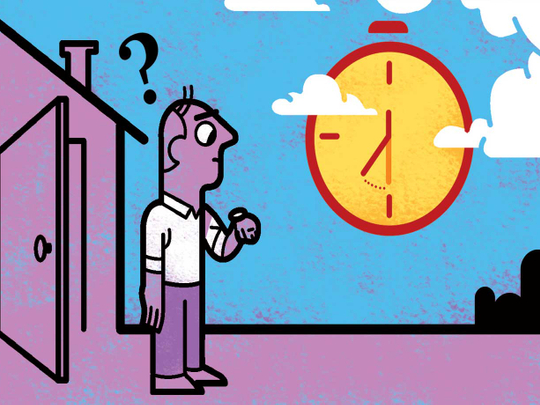
This is the time of the year when many countries, mostly in Europe and North America, “spring” forward by an hour, reducing one weekend day to 23 hours and losing one hour of sleep. Those 70 or so countries will recover that hour some six months later, when they “fall” back to “standard time”.
The practice, which started almost a century ago, has lately become a large worldwide source of confusion. To begin with, every country, except those in Europe, which has a unified system, has its own dates for the start and end of “summer time” (switch dates range from February 21 in Brazil to May 15 in Chile). In fact, in several big countries, not every region abides by the switch: In the United States, Arizona and Hawaii do not; in Brazil only the southern regions do the switch, and in Australia, two states do not follow the rest. And this all leads to confusion for the rest of the world when meetings, travel and programming of various tasks have to be conducted internationally.
Daylight saving time was actually proposed in 1895 by New Zealand naturalist George Hudson and it was first implemented in Germany in 1916. The idea was to take advantage of longer evenings in the summer to both allow for more social activity and save on lighting (candlelight or electric bulbs). But the practice really took off in the 1970s when the energy crisis (oil prices increased manifold) pushed many countries to look for ways to reduce energy consumption.
People, or more precisely, some specific economic sectors, soon found important benefits to summer time. In particular, the retail business sector quickly noted the significant increase in shopping by people, simply because evening daylight pushed them to go out — and thus buy. The sports sector also noted that people had time to practice outdoor sports. Indeed, one of the arguments often used by proponents of daylight saving time is that it improves people’s health by encouraging them to go out and exercise. And another important argument is the reduction in fatal car accidents, particularly those involving pedestrians, as drivers see them more clearly and can more easily avoid them. Finally, evening daylight significantly boosts tourism activity.
But people often ask: Doesn’t the “falling back” to winter time (usually in late October or early November) negate the gains made in the spring? The answer is: It reduces the net gain but does not negate it completely, mainly because people tend to start their days after sunrise all year around. Thus, the morning change is not much noticed, while evening change certainly is. Except in one important area, however: Winter time makes children go to school in the dark in many places and that increases the risks of accidents.
Most of the above arguments in favour of daylight saving time, however, have been strongly disputed by a number of researchers with various studies and data analyses. Take energy consumption, for instance, which was the first and foremost reason presented for the adoption of the practice. While official US figures in the 1970s estimated that summer time would save the country about 1 per cent in its home energy consumption, more recent reviews have pointed out that our changing lifestyles have essentially negated that gain. Indeed, people use their cars to go out and shop, thus increasing gasoline consumption, and both homes and transportation means now often use air-conditioning, another large source of energy consumption. And more driving means more accidents later in the evening, when people are going back home.
Opponents of daylight saving time have recently added a series of problems that the practice presumably introduces, particularly the small but important changes in people’s sleep patterns and circadian rhythms. These result in a host of potentially serious consequences, such as the weakening of the body’s immune system (more sickness), tiredness (loss of performance at work and at school) and increased accidents of all kinds due to loss of attention. One study has estimated the total cost of the switch to the US economy at $434 million (Dh1.59 billion).
One impact that I have not seen mentioned in discussions is the longer fasting days for Muslims in the West, as Ramadan now falls in June, especially in countries (United Kingdom, Canada, Northern Europe) where sunset occurs around 10pm. For weaker people, an extra hour in the evening during Ramadan is particularly taxing.
To sum up, the practice introduces much confusion: When is it “standard time” in the US, when is it “daylight time”, “summer time”, “winter time”; when does it start in Europe, in Australia and other places? Moreover, the benefits that were originally touted have now been shown to be exaggerated at best, while some negative effects have been flagged (though they need further investigation). It is thus not a surprise that a number of countries, including China and Russia, have dropped the practice after trying it for many years.
Perhaps with globalisation now firmly upon us, a collective review and consensual decision should be made on daylight saving time.
Nidhal Guessoum is a professor of Physics and Astronomy at the American University of Sharjah. You can follow him on Twitter at: www.twitter.com/@NidhalGuessoum.









